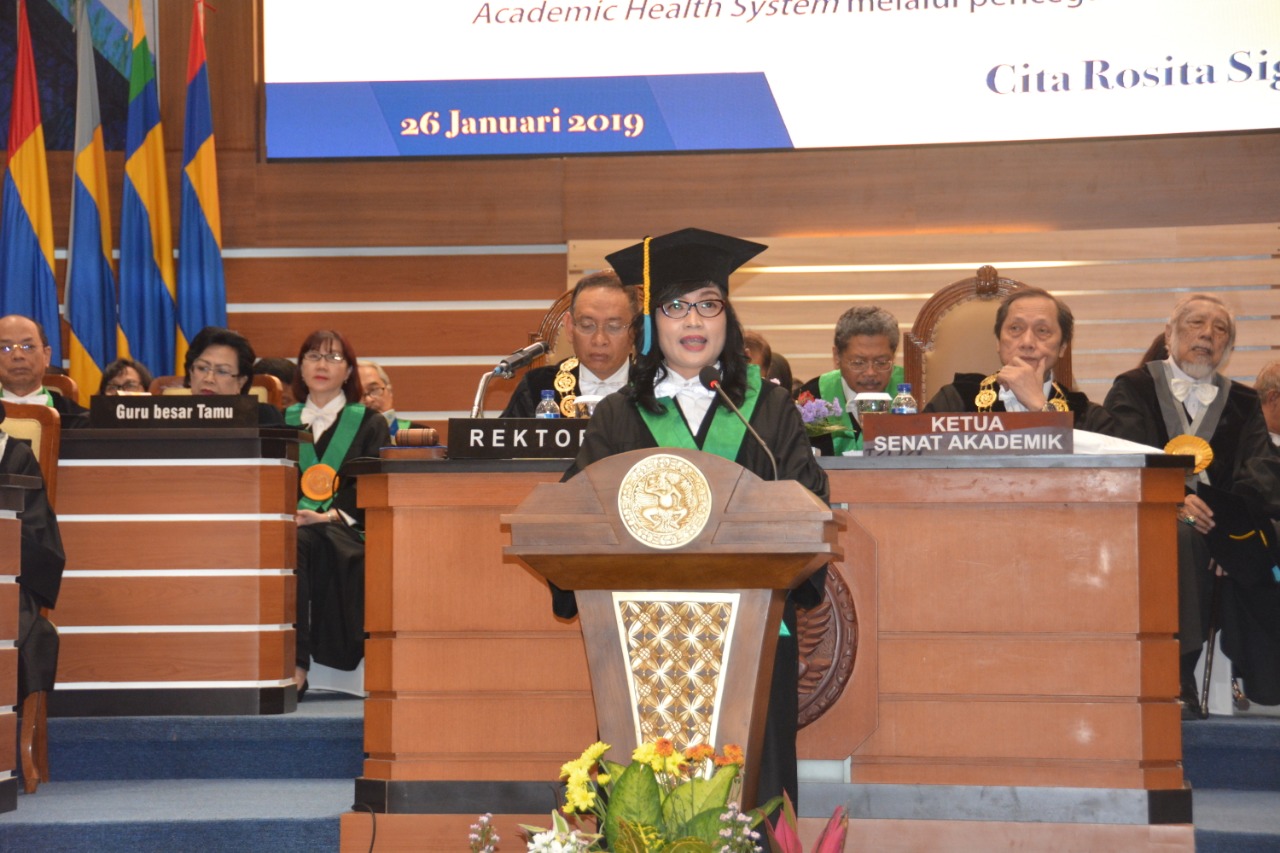UNAIR NEWS – Based on data released by PubMed, an international health research website, most scientists in the fields of leprosy concentrate on curative care and diagnostic method while Preventive and promotive aspect are less popular as research subjects.
In details, the percentage of leprosy research publications is 46% for curative, 39% for diagnostic, 12% for preventive, 3% for rehabilitative and 0% for promotive aspect.
As a matter of fact, data from WHO (World Health Organization) until 2017, the number of people with leprosy is going down. Globally, the number of people with leprosy 12.189 million. There are 1.116 million people with leprosy and 6.513 million in South East Asia.
Prof. Dr. Cita Rosita Sigit Prakoeswa, dr., Sp.KK(K), FINDV., FAADV., in her inauguration stated that problem as challenges for scientists, especially in an effort to deal with the disease by minimizing the number of new patients.
”Leprosy is identical with poverty. There is disability and stigma which make them alienated, exiled and felt that they are treated differently,” Prof. Cita said.
Unfortunately, the advanced science has not been able to reduce the number of patients significantly.It means that the science is only “able to increase” the number of cured patients. On the other hand, it does not stop new patients growing.
Negative Stigma from Leprosy
Quoting Arole, Prof. Cita said that stigma and discrimination experience make people feel ashamed and exiled themselves. As a result, there is still stereotype that said leprosy is something shameful.
”A research in South Africa showed that a third of the patients were abandoned by their spouses,” she said.
”Meanwhile in Indonesia, based on research, the stigma make the patients feel ashamed in terms of looking for spouse and well-paid jobs,” Prof. cita added.
Other than physical impact, stigma to the patients also affect greatly to the people’s life psycholoicallt, socially and economically.
Unfortunately, negative stigma make patients in endemic area do not get excellent preventive and promotive healthcare.
”They (patients, ed) tend to stay away from healthcare because they feel ashamed, different and drawing attention,” she said.
”The health personnel may rarely visit because they are afraid of being transmitted with the disease,” she added.
Thus, a comprehensive method to deal with immunity dysregulation is needed, especially in endemic area.
”Have we had enough research products on it? Not yet,” she reiterated.
Academic Health System (AHS)
Therefore, in conducting the necessary researches for the implementation of the comprehensive method, a system is needed.
Prof. Cita explained that at the moment, Ministry of Research, Technology and Higher Education and Ministry of Health have pioneered an integration in the form of Academic Health System (AHS). Melalui AHS, a synergy between universities and healthcare provider can be performed.
”Drawback from Puskesmas in the program innovation can be dealt with collaboration with universities, and vice versa, shortcomings from universities to reach the endemic areas are also dealt with,” she explained.
”Shortcoming from Puskesmas and universities on the availability of leprosy medical expert and researcher can be overcomed through collaboration with hospitals,” she added.
According to Prof. Cita, in the future, intersectoral comprehensive method of Academic Health System (AHS) in handling leprosy is expectes to create synergy and bring welfare, especially to tackle disability and stigma issues including to make Indonesia free from leprosy. (*)
Author: Feri Fenoria





